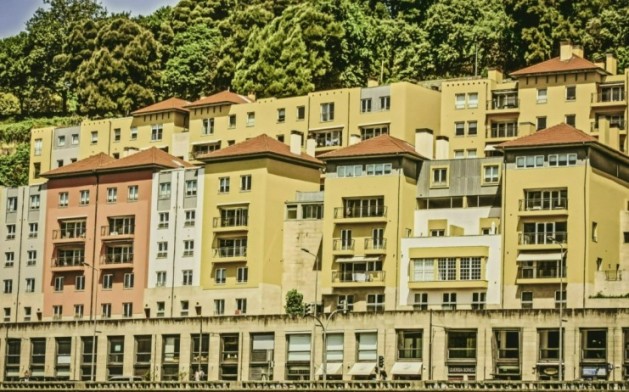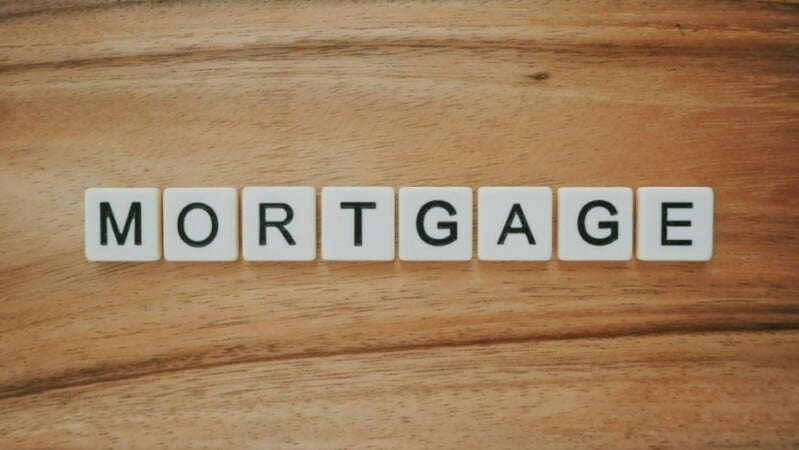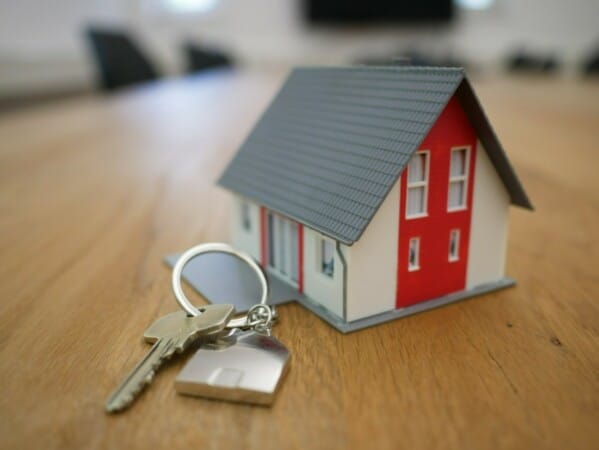Updated: May 14, 2025
A real estate investment has a lot of advantages, one being that you can use your investment as a means to create passive income. One way to do this is through buy-to-let — buying a property, such as a house or an apartment, in order to rent it out to somebody else and earn rental income. In this article, we’ll look at what buy-to-let means, how it works, and how to manage your buy-to-let property in Portugal.
There are a lot of attractive areas in Portugal to invest in buy-to-rent property. The Algarve, for example, is a popular destination for expats and holiday-makers. Investing in a property here, you can find some of the best rental yields in Portugal, plus capital appreciation.
How to Buy-to-Let
As we have mentioned, buy-to-let, also known as buy-to-rent, is a fantastic way to invest your money in property to earn a passive income, and Portugal is an excellent country in which to do this. TheMoveChannel, a leading independent international real estate portal, describes Portugal as having a rental income of 5.64 percent. Surpassing both Spain and France, Portugal has the ninth-best rental income in Europe.
So, how do you get started? The first step in your journey to becoming a buy-to-let landlord is to choose the right property and mortgage for you. To do this, there are three points to consider: The tenant, the location, and your rental income.
Choosing a Property and Mortgage
Identifying the type of tenant you want for your buy-to-let property can help you determine the location and type of property to invest in. A family will have different requirements than a student, so it’s essential that you take this into account when choosing the type of property you want to invest in and where it is located. Our guide on the Best Cities to Live in Portugal may be of interest.
Choosing the wrong location for your target tenant can make it difficult to successfully rent the property out, which can result in a loss of income. In addition to location, you will need to consider how you intend to manage your buy-to-let property. If you intend to manage the property yourself, its ideal location would be near you to avoid lengthy travels to and fro. However, if you plan to use a letting agent, you are less restricted and can look to areas that may have a greater demand for rental properties. It is worthwhile speaking to a few estate agents to get an idea of what’s in demand and any gaps that may exist in the market.
In terms of rental income, you will need to ensure that you charge a rent that covers your rental costs. To do this, work out how much you’ll spend on buy-to-let mortgage payments, insurance, agent’s fees, etc. A good idea is to work out what you’ll need to spend each year and consider any periods when the property is vacant, estimating the effect this may have. It can help to see what rental prices other landlords and agents are charging for various property types to see if you are setting your rent appropriately.
Which buy-to-let mortgage is right for you?
A buy-to-let mortgage is not the same as a residential mortgage. The amount of money you are able to borrow is mainly dependent on the income you expect to receive from the rental property. Many lenders will specify that your rental income must be a certain percentage higher than your mortgage payments.
Buy-to-let properties require a higher deposit, and buy-to-let mortgages have higher mortgage interest rates. In addition to this are the normal costs of purchasing a property, such as surveys of the property and legal fees, as well as a product fee that is often charged by lenders.
You will also need to put down a deposit when purchasing a property in Portugal. For non-residents, the minimum deposit is typically 30 percent of the purchase price. Other costs include stamp duty, lawyer fees, and mortgage application fees. A general rule is to have 30-40 percent of the property purchase price available to cover these costs, as they cannot be covered through a mortgage.
Another cost to be aware of is stamp duty, which is charged at 0.8 percent in Portugal. In places like England and Northern Ireland, this tax is charged at a higher rate on properties intended to be rented out, and the percentage increases based on the value of the property.
Almost all mortgages in Portugal are principal plus interest loans, but banks offer both fixed-rate and variable-rate mortgages. A fixed-rate mortgage means that your payments will remain the same for a fixed term, even if the interest rate rises. An important note is that the initial rates on fixed mortgages tend to be higher than those on variable mortgages. However, the interest rate on a variable mortgage can increase or decrease depending on who your lender is.
You also have the option of choosing between an interest-only mortgage or a repayment mortgage. With an interest-only buy-to-let mortgage, you pay only the mortgage interest each month. So, by the end of the mortgage term, you will still owe the initial amount that you borrowed and will still be charged mortgage interest on the full balance of the mortgage each month until you have repaid it in full.
The advantage of this option is lower monthly payments, making it easier to meet the rental income criteria for a buy-to-let mortgage. There are, however, extra conditions for an interest-only mortgage. They are typically available for new constructions only and are usually limited to a two-year term. In Portugal, most mortgages run for 25 years, but it is possible to get terms up to 30 years. Banks tend to vary the maximum allowed age of borrowers, generally capping it at 70 years. However, some banks extend this limit to 80 years. This age can affect the borrowing term that a bank or institution will allow.
A common move by buy-to-let investors is to sell the property at the end of the mortgage term in order to cover the mortgage balance, but this comes with its own risks. For example, if the value of your property decreases due to changes in the housing market, you will still need to pay back the original amount borrowed and will face a loss. As such, it is important to have a payback plan for when the mortgage term ends.
The monthly payments for a repayment mortgage are higher, as you pay both the interest and part of the amount borrowed. The advantage of this is that you will have fully repaid your debt by the end of the mortgage period. We advise speaking with a mortgage adviser for more information and advice before choosing a mortgage.
Managing Your Buy-to-Let Investment
How you manage your buy-to-let property will depend largely on your aims. Do you intend to build a profit through rental income? Or are you hoping for property prices to increase so that your rental income will cover your costs until you can sell the property at a profit? Both instances require you to manage your costs effectively and understand your legal obligations and responsibilities as a landlord. Below is a list of aspects to consider.
Rental income tax
In Portugal, rental income is taxed at 28 percent. Once you have deducted allowable expenses, you may need to pay income tax on the profit you make from your rental property. You should also check the regulations regarding how much tax relief landlords get, as this will determine what costs you are able to deduct from your income when calculating your taxable profit. For example, the annual costs of maintenance, repairs, insurance, and municipal taxes can be deducted as business expenses in Portugal, while mortgage insurance and interest are not allowable expenses and, therefore, not deductible. It is helpful to seek advice from a qualified tax advisor.
Capital Gains Tax
Consider the effect of Capital Gains Tax if you plan to profit by selling the property once property prices have increased (sometimes called ‘capital growth’). For Portuguese non-residents, it is charged at 28 percent, while residents add capital gains to their income at the standard tax rate.
Rental yield
By calculating your rental yield, you can compare the potential profitability of different properties. You can use a local property website to compare rental amounts for properties similar to what you are considering. The steps below outline how to calculate your rental yield:
- Calculate the potential annual rent and subtract your costs
- Divide the result by the property value
- Multiply by 100 to generate the rental yield as a percentage
Agent fees and right-to-rent checks
You may want to use an agent to manage the property if you don’t live nearby. Agent fees can range from 5 percent to 15 percent of the rent, depending on the degree of management service you require. Finding and vetting prospective renters can be time-consuming, but you can also pay your agent to do this on your behalf.
Vetting helps to ensure you rent to tenants who can afford the rent, have not committed fraud, and have the legal right to rent in the country. Proper vetting also helps you avoid fines for non-compliance. Check the government guidelines of the country in which you are planning to rent out a property to make yourself aware of what guidelines you need to comply with.
Visit our guide on How to Find a Property Manager in Portugal for more information.
Appliance and safety maintenance
You must make sure that the property is safe for your renters to live in. This includes:
Organizing yearly safety checks on all gas appliances by a registered engineer
- Hiring a qualified electrician to check all fitted electrical appliances are safe before the tenant moves in
- Providing tenants with copies of the gas and electrical safety certificates
- Installing smoke alarms on each floor of the property
- Installing carbon monoxide detectors in rooms with fuel-burning devices, such as gas boilers and heaters
- Getting an Energy Performance Certificate for the property within seven days of putting it on the market to tenants
- Ensuring all tenants have a clear route of escape in the event of a fire
- Ensuring all furniture meets safety standards
- Fixing any broken appliances or structural faults
These requirements may vary depending on the country or city, so make sure to check the safety requirements before purchasing the property.
Tenancy contracts and deposit schemes
A tenancy contract is between the landlord and the tenant and defines the rights and responsibilities of each party. It covers the agreed rent, rules for the tenant, when rent can be increased, and what happens in the event that either party wants to end the agreement.
This contract also describes how the tenant’s deposit is protected according to the law. This may mean depositing the money into a scheme that ensures it is available when the tenancy period ends. Not protecting the tenant’s deposit in line with the law may leave you open to legal action from the tenant.
Insurance
A condition of many mortgages is having building insurance. If you intend to rent your property out with furnishings, you should also consider contents cover. There is also landlord insurance that can cover your liability for loss of rent, damage done by tenants, the replacement of locks and keys, and damage to possessions that occur on the property.
It is important to research what insurance is available to you and what it covers.
Licensing and permission
If you are considering capitalizing on renting in Portugal, depending on the type of property, you may need permission before renting it out. You may also require certain licenses depending on how you plan to rent out your property, for example, renting out different rooms to different individuals or renting out the entire property to one family.
If you plan to rent your property out as a short-term rental, you will need to register for an Alojamento Local (AL) license. This license is issued by your local council (Câmara Municipal). An AL license covers properties intended to be used by fewer than 50 people.
Inheritance tax
If the property you intend to rent out is one you have inherited, the deceased individual’s estate may be charged Inheritance Tax. This tax can be as high as 40 percent in some countries, meaning you may have to sell the property instead. In such a case, we recommend you seek advice from a tax expert.
In Portugal, inheritance tax does not technically exist anymore, but stamp duty is charged at a flat rate of 10 percent for inherited property. This tax applies to Portuguese assets only. There is an exemption to this tax if the heir to the property is legitimate, such as a spouse, child, grandchild, parent, or grandparent. If the heir is not Portuguese, administration fees may apply as well. Again, we recommend seeking advice from a tax expert when inheriting Portuguese property.
Helping You Buy-to-Let
If you’re interested in Portuguese real estate, it’s important to remember that the amount you can borrow is influenced by whether you are a Portuguese resident or a non-resident. There are no restrictions on non-EU residents who want to buy property in Portugal.
While the government does what it can to encourage foreign investment, most Portuguese banks offer non-residents loans of around 65 to 75 percent of the property’s value or sale price – whichever is lower. In comparison, fiscal residents of Portugal can benefit from loans of around 85 to 90 percent of the sale price.
Portuguese mortgage lenders will review your financial situation before deciding whether or not to offer you a loan. Many lenders will not allow the sum of any existing debt and your new mortgage payments to be greater than 35 percent of your monthly income tax.
We recommend that anyone interested in property investment, whether first-time buyers or seasoned buy-to-let investors, do their diligence regarding tax laws, mortgage deals, and all that comes with being a buy-to-let landlord. The best way to do this is to seek professional advice from experts in the field.
Mortgage calculators
Most mortgage calculators consider your net borrowing, mortgage insurance, and property tax in order to calculate an estimated monthly mortgage repayment. A number of Portuguese banks and mortgage providers have online mortgage calculators on their websites. Keep in mind that interest rates can change depending on the economic climate.
Home insurance for landlords
In Portugal, you will need a minimum level of building insurance when you buy a home and take out a mortgage. There are many English-speaking companies that provide expat home insurance, including:
You can also consult this article for more information: Insurance for Real Estate.
Goldcrest: Who We Are and How We Can Help You
If you have found your dream buy-to-let property in Portugal, seek help from a specialized property investment firm such as Goldcrest. Our experienced professionals guarantee purchase advantages and work through the requirements, hidden costs, and fine print smoothly and efficiently.
Contact the Goldcrest team to access exclusive information on the property market in Portugal and find out how much you can save on your international investment.
Frequently Asked Questions about Buying to Let
Is buy-to-let worth it?
While no investment is without risk, buy-to-let can deliver great returns if done well. This will not happen quickly, as the costs to invest are higher, but buy-to-let can be a beneficial investment for many.
Is buy-to-let a good investment in 2024?
Buy-to-let can be a good option if you want to invest in Portugal, but it does depend on your specific situation and the country in which you intend to invest in. In Portugal, there is a greater demand for lodging than there is supply, particularly in popular locations like Lisbon and Porto. There is also the case of high returns from tenants in the busy tourist season, which is an advantage of renting out a property.
Are buy-to-lets risky?
Any investment carries risk, and buy-to-let properties are no different. You can protect against this risk by seeking professional advice before investing and throughout your buy-to-let investment period.
You can also protect your property and investment with insurance, regularly maintain your property and appliances to avoid unexpected expenses, and take steps to fully understand the legal and financial implications of your investment.
What is the meaning of let-to-buy?
Let-to-buy is when you purchase a new home to live in and keep your current home to rent out to tenants.
Is there profit in buy-to-let?
Buy-to-let can provide you with strong returns on your investment if you play your cards right. Securing a steady cash flow will not happen overnight, as the costs to invest can be high, but buy-to-let can be a very beneficial investment.
You should also consider mortgage repayments if you are taking out a loan to finance your property. Plus, you will need to pay income tax on the rental income, which in Portugal is 28 percent.
How do buy-to-let work?
Can I buy property in Portugal and rent it out?
Yes, you can buy property in Portugal with the intention of renting it out. Be aware of the legal regulations in place and if there are any location restrictions.



 Organizing yearly safety checks on all gas appliances by a registered engineer
Organizing yearly safety checks on all gas appliances by a registered engineer

